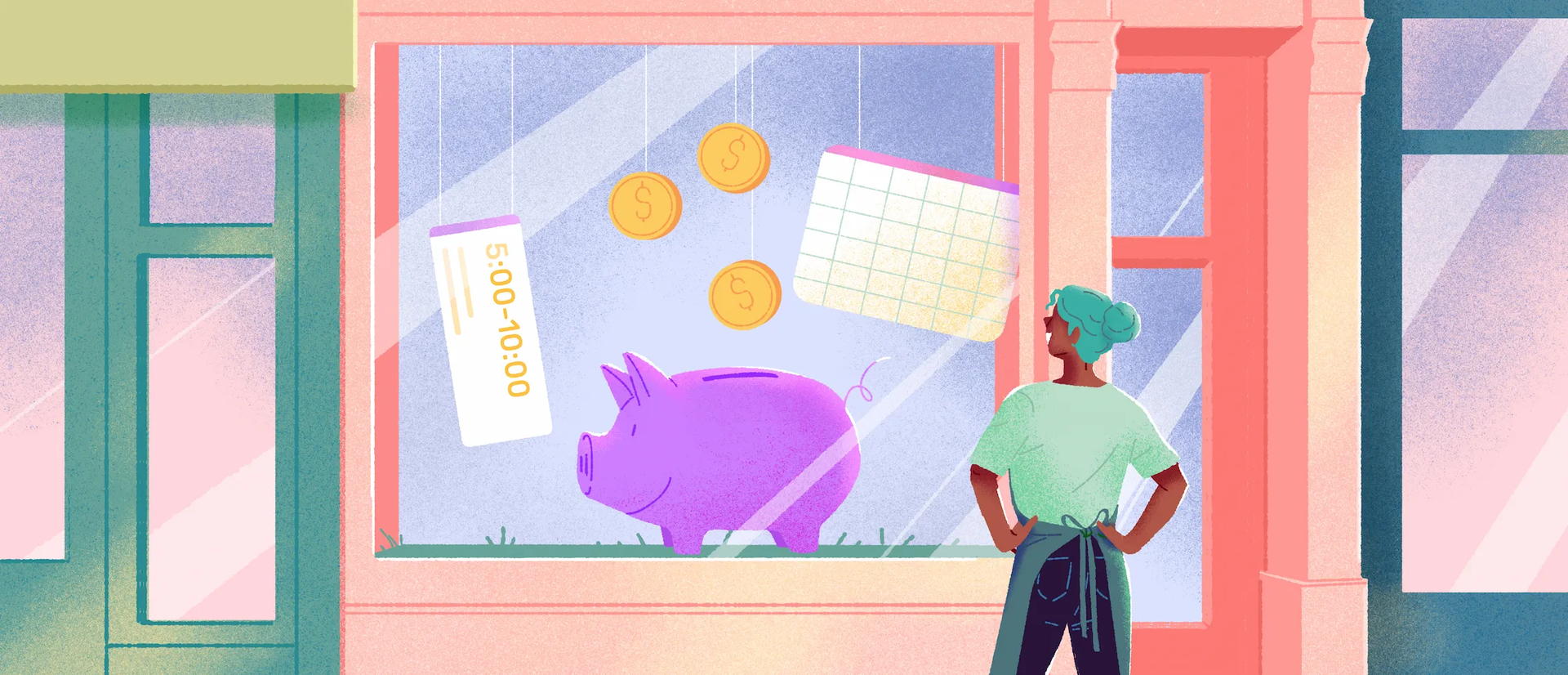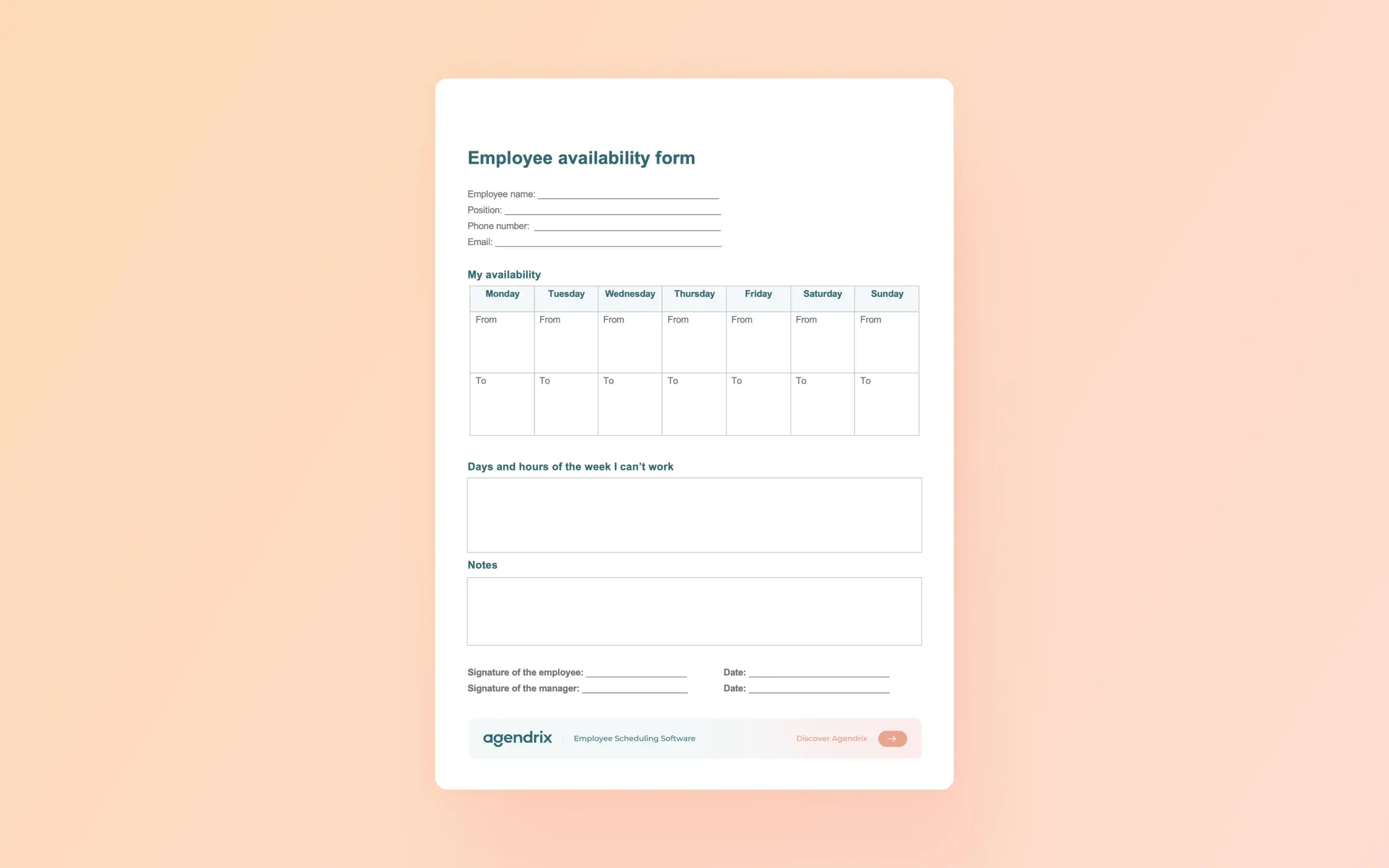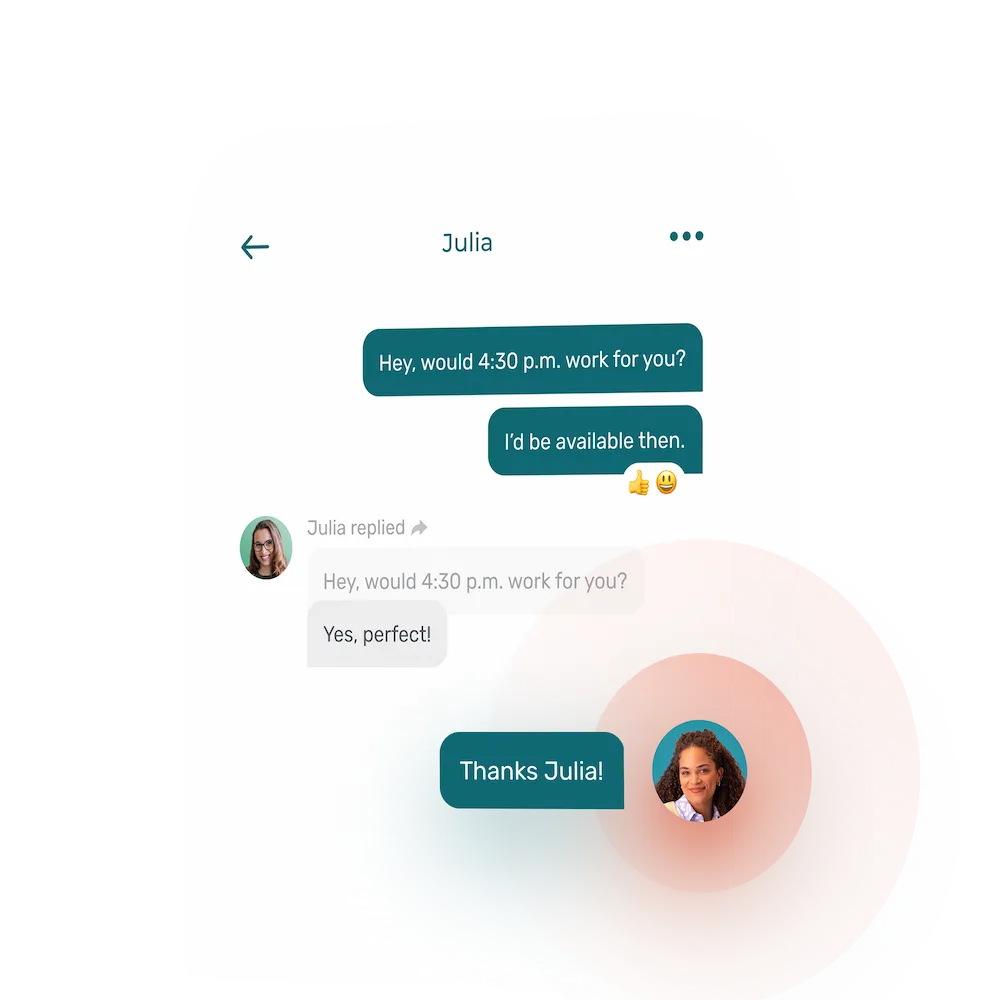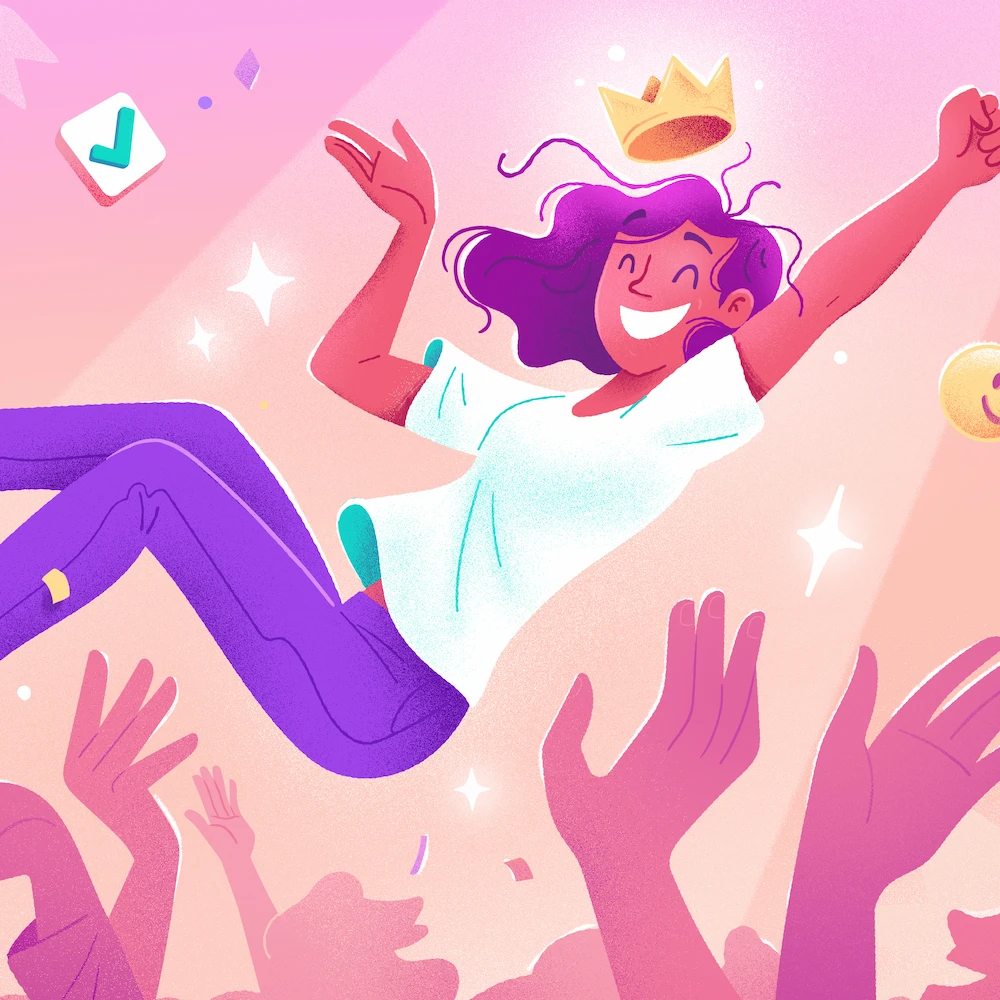Creating retail schedules can be a nightmare: predicting customer demand peaks, juggling multiple retail stores, striving to drive labor costs down… no easy task for any busy store manager.
Learn how to create the best work schedule for your retail store, the benefits you’ll gain from schedule optimization and how using a retail scheduling app can be a game changer.
Key Takeaways
- The nature of the retail industry makes employee scheduling particularly challenging.
- Certain types of employee schedules are better suited to retail stores.
- Optimizing your retail work schedule will benefit your business in numerous ways.
- Several factors complicate retail work schedules; by following best practices, store managers can optimize employee scheduling.
- One best practice is to use a retail scheduling app, which will allow your business to realize these benefits with minimal time, effort, and investment.
- There are key features to look for in a good retail work schedule software.
- Consider your software options carefully; make sure it’s also user-friendly, flexible enough to scale to your business’s evolving needs, and comes with great customer support.
How Is Scheduling Retail Employees Different From Other Businesses?
The nature of retail can make scheduling employees particularly difficult. Retail stores have significant fluctuations in customer traffic, especially during peak times like holidays and sales seasons. Managers and schedulers need a scheduling approach that’s robust enough to ensure adequate staffing during busy periods, but flexible enough to avoid overstaffing during slower times to minimize accumulating overtime hours.
By optimizing employee work schedules, retail stores can simultaneously optimize employee productivity and satisfaction, customer service, and labor costs.
Factors That Complicate Retail Work Schedules
- Retail staff often includes a high proportion of part time employees, such as students, who require flexible schedules to accommodate their studies. Managers must balance business needs with employee availability.
- Different types of retail stores may need to use a different type of employee schedule. For instance, a hardware store might have steady business hours and predictable busy weekends, while a pharmacy could require a 24/7 schedule to meet community health needs. Each type of store has its own peak hours, influenced by the nature of the products sold and customer shopping habits.
- In retail, your best workers are your best scheduling assets. Skilled and experienced employees can handle peak times efficiently, provide better customer service, and mentor new or less experienced staff. Recognizing and leveraging the strengths of these key employees can significantly enhance store operations.
- To keep good retail workers, it’s crucial to offer them a good work-life balance. Retail jobs can be demanding, especially during peak seasons; ensuring employees have enough time off and flexible schedules contributes to their happiness and productivity. Happy employees are more engaged, provide better customer service, and are less likely to leave, reducing turnover and training costs for the business. Balancing business needs with employee well-being is essential for a successful retail operation.
Types of Schedules That Work Great in Retail
Swing shifts and rotating schedules are two types of work schedules often used in retail. These employee schedules can address the dynamic needs of the business while also considering employee preferences and fairness.
Swing Shifts
What is a swing shift?
Swing shifts typically refer to work shifts that cover the middle part of the day into the evening, bridging the gap between traditional morning and evening shifts. In retail, this might mean a shift that starts in the late morning or early afternoon and ends in the late evening. This type of schedule ensures adequate staffing during these peak times without overstaffing during the slower morning hours or late at night.
Why use a swing shift?
A swing shift is most useful for retail businesses that experience a significant influx of customers during the afternoon and evening hours, such as grocery stores for instance. Swing shifts are especially suited to stores in busy urban areas or shopping centers that see consistent traffic well into the evening.
When should you use a swing shift?
Swing shifts are very useful during periods of extended store hours, such as holiday seasons or special sales events, when customer traffic increases during the late afternoon and evening.
What are the employee benefits of a swing shift?
Swing shifts can be beneficial for employees who prefer or need to work outside traditional morning hours due to personal commitments, like school or childcare.
See Best Practices for Using Swing Shifts.
Rotating Schedules
What is a rotating schedule?
With a rotating schedule, employees cycle through different shifts (morning, swing, night) over some time, such as weekly or monthly.
Why use a rotating schedule?
Rotating schedules ensure that all employees take turns working the less desirable shifts, like early mornings or late nights. This promotes fairness, which can help prevent employee dissatisfaction. It also minimizes the risk of employee burnout by ensuring everyone shares the burden of less desirable shifts.
When should you use a rotating schedule?
A rotating schedule is ideal for retail businesses that require 24/7 coverage or have extended hours in the morning and evening, but that also want to maintain fairness among employees regarding shift assignments.
What are the employee benefits of a rotating schedule?
In retail, rotating schedules can help promote fairness among employees by distributing weekend and holiday work evenly among staff. This way, no one employee is consistently stuck with unfavorable shifts. All employees feel valued, which in turn improves job satisfaction, productivity, customer service, and team cohesion.
See our Industry Guide to Rotating Shift Schedules.
Both scheduling types require clear communication and scheduling software or systems to manage effectively. They can be adjusted based on employee feedback and business needs to ensure they serve the intended purpose of balancing operational demands with employee well-being.
Retail Work Schedule Best Practices
There are several retail scheduling best practices that businesses of all sizes should adhere to. The following practices will simplify retail staff scheduling and improve business performance overall.
1. Allow Retail Employees to Swap Shifts
Letting employees trade shifts with colleagues gives them flexibility and autonomy over their work schedules. This practice can lead to increased employee satisfaction and retention, as it allows workers to balance their jobs with personal commitments. It will also reduce staffing issues like unexpected absences and high employee turnover.
💡Tip: Establish clear guidelines for shift swapping.
Employees swapping shifts should have similar skill sets and experience levels to ensure that changes do not disrupt store operations.
Learn more: How to Effortlessly Schedule Employee Swap Shifts.
2. Use a Schedule Template
Using a type of schedule will streamline your scheduling process and make it more efficient. It will also lead to more consistent and accurate schedules. A template lets managers quickly fill in employee names and shifts based on predetermined patterns, such as peak business hours and staff availability. This reduces the time spent on creating schedules from scratch each week and helps maintain a standard structure that employees can become accustomed to.
💡Tip: Try before buying. Here are the best free work schedule templates.
3. Use Retail Scheduling Software
Using a free schedule template is good. Using a fit-for-purpose retail scheduling software is a total game-changer. A good scheduling system will automate all aspects of the employee scheduling process—from onboarding new hires to centralizing employee records to sending out employee high fives for a job well done. It will also reduce manual errors, and save significant amounts of time.
Retail scheduling software tools come with features like time-off requests, employee availability management, and shift swapping, all within a single platform. This will improve communication, reduce scheduling conflicts, and make it easier for managers to adjust the weekly schedule as needed.
💡Tip 1: Look for a scheduling tool or software that can also provide insights into labor costs and employee performance, to help you make informed staffing decisions.
💡Tip 2: Look for scheduling software that also makes life easier for employees. Some retail scheduling software comes with mobile apps that allow employees to view their schedules, request shifts, or report availability changes in real time.
Learn: See the best software for retail scheduling and team management.
4. Use Rotating Schedules
Rotating schedules will distribute shifts fairly among all the employees, ensuring that everyone gets to work different times and days, including weekends and holidays. This will prevent employee burnout and dissatisfaction by ensuring no one is consistently working undesirable shifts. Rotating schedules also expose employees to various operational hours, which can be beneficial for their professional development and understanding of the business.
Learn: How to make a rotating shift schedule.
5. Publish Your Schedule Ahead of Time
Publishing work schedules well in advance gives employees sufficient time to plan their personal lives around their work commitments. This can lead to better work-life balance, reducing employee absenteeism and improving job satisfaction.
💡Tip: Ideally, publish your employee schedules at least two weeks in advance, although more notice can be even more beneficial for employees.
Learn more: Many retail businesses are subject to predictive scheduling laws, with potential penalties for violations.
6. Automate Time-Consuming Tasks
Automating routine and time-consuming tasks not only streamlines the scheduling process but also enhances overall operational efficiency. Beyond shift assignments, automation can extend to communicating with staff, such as sending out schedule notifications and updates, collecting employee availability, and managing time-off requests through digital platforms.
By a, managers can focus more on strategic tasks and improve store performance, while also providing a more seamless and responsive employee experience.
💡Tip: Also automate timesheets and integrate them with your payroll systems. Automating time & attendance will significantly reduce manual data entry and errors, ensuring employees are paid accurately and on time.
Online timesheet software will automatically fill out your employees’ timesheets when they clock in and out or take breaks. You then review any issues identified by the software and simply export them to payroll.
9 Benefits of Retail Employee Scheduling Optimization
Optimizing employee schedules in retail can lead to a myriad of benefits: improved store performance, better employee well-being, and superior customer service and satisfaction. Here are the biggest benefits, and how you can achieve them with a retail work schedule software like Agendrix.
1. Better Control Over Labor Costs
Effective scheduling ensures that staffing levels are closely aligned with store traffic and sales forecasts. This will prevent overstaffing during slow periods and understaffing during peak sales periods. This balance minimizes unnecessary labor costs while ensuring sufficient staff to meet customer needs, directly impacting the store’s profitability.
How to control labor costs with Agendrix retail work schedule software
Agendrix provides real-time visibility into labor costs associated with each schedule. Retail managers can see the financial impact of each shift and adjust schedules accordingly to ensure they stay within budget, helping to control and reduce unnecessary labor expenses.
Results of actual real savings reported in 2023 survey of 669 managers using Agendrix:
- 50% decrease in time devoted to scheduling—average of $5,120 saved per year on manager’s salary alone*
- 53% decrease in time devoted to managing and processing worked hours—average of $3,892 saved per year on manager’s salary alone*
*Average hourly rate for managers as reported by respondents was $28.32.
See all gains reported by survey respondents.
2. Easier Tracking of Employee Hours
Optimizing your retail work schedule facilitates accurate tracking of employee hours, making it easier to manage overtime and comply with labor laws. This ensures that employees are compensated fairly for their time, reducing the risk of legal issues and employee dissatisfaction.
How to track employee hours with Agendrix retail work schedule software
Agendrix automates time tracking, allowing employees to clock in and out directly through the platform, either on their own mobile device, desktop, or workplace kiosk. This lets you accurately monitor employee hours, manage overtime, and ensure compliance with labor laws, reducing the risk of payroll errors and disputes.
3. Better Customer Service
By aligning staff schedules with customer traffic patterns, retailers can ensure that they have enough employees on the floor during busy times, improving customer service. Satisfied customers are more likely to return and recommend the store to others, driving sales and loyalty.
How to improve customer service with Agendrix retail work schedule software
Agendrix lets you analyze historical data and trends, helping you to forecast peak periods and schedule enough staff to handle increased customer traffic. This will ensure your stores are well-staffed during busy times, enhancing the overall customer experience.
4. Improved Employee Satisfaction and Retention
Offering flexible, fair schedules that consider employee preferences and commitments can significantly improve job satisfaction. Happy, engaged employees are more productive, provide better customer service, and are less likely to leave. This will reduce your turnover and the associated recruitment and training costs.
How to improve employee satisfaction and retention with Agendrix retail work schedule software
Agendrix includes features for managing time-off requests and shift swaps, giving employees more control over their schedules. This flexibility and consideration of employee preferences can lead to higher job satisfaction, increased loyalty, and lower turnover rates.
Show employees that their needs and preferences matter. Download our free employee availability template.
5. Increased Operational Efficiency
Optimized scheduling allows managers to allocate staff to different areas of the store or to different stores, based on demand. This ensures all tasks are covered efficiently. This can lead to smoother store operations, better inventory management, and a more pleasant shopping environment.
How to improve operational efficiency with Agendrix retail work schedule software
The software allows managers to assign specific tasks and roles for team members during each shift, ensuring that all areas of all stores are adequately staffed. This organized approach to task allocation can streamline store operations and ensure that resources are used efficiently.
6. Better Communication With Employees
Advanced scheduling tools and software promote transparency and ease of communication between managers and staff. Employees can easily access their schedules, submit time-off requests, and communicate availability changes, reducing scheduling conflicts and misunderstandings.
How to improve communication with employees with Agendrix retail work schedule software
Agendrix features a built-in messaging system and notifications, improving communication between managers and employees. Schedules, updates, and changes can be communicated instantly.
7. Schedules Better Adapted to Business Needs
Optimized scheduling provides the flexibility to quickly adapt to unexpected changes, such as staff absences, sudden increases in customer demand or traffic, or changes in store hours. This agility helps maintain seamless store operations under various circumstances.
How to adapt schedules to business needs with Agendrix retail work schedule software
With Agendrix, managers can quickly adapt schedules in response to unexpected changes, such as employee absences or sudden spikes in customer traffic. The software’s flexibility helps maintain uninterrupted store operations, even under unforeseen circumstances.
8. Smarter Data-Driven Decisions
With advanced retail work schedule software, managers can leverage historical data on sales and customer traffic to make informed scheduling decisions. This data-driven approach can improve accuracy in predicting busy periods, enhancing all of the above benefits.
How to make data-driving decisions with Agendrix retail work schedule software
Agendrix collects and analyzes data on staffing, labor costs, and employee performance. Retail managers can use these insights to make informed decisions about future scheduling. This will improve the accuracy of your staffing predictions and optimize schedules based on proven trends.
9. Better Work-Life Balance for Employees
Providing employees with predictable and reasonable schedules contributes to a better work-life balance, essential for their overall well-being. This balance can lead to reduced stress levels, higher job satisfaction, and improved mental health, all of which contribute to a more positive workplace atmosphere.
How to give employees a work-life balance with Agendrix retail work schedule software
The software’s ability to accommodate employee availability and preferences, along with its shift swap and time-off request features.
Choosing the Best Retail Work Schedule Software
Good retail work schedule software will have all the key features that managers need to optimize their work schedules. Here are the main features to look for:
- Intuitive schedule creation and management: The software should have a user-friendly interface so that planning tasks are simple and efficient.
- Employee time and attendance tracking: The software should be able to accurately track employee hours through digital clock ins and outs.
- Labor cost control: The software should give you visibility into labor costs so that you can manage budgets effectively.
- Shift swap and absence management: The software should make managing shift swaps and time-off requests easy, with the ability to add and modify rules for swapping shifts. That way, you control how shift trades are done, but still accommodate employee needs.
- Employee communication: The software should come with an integrated messaging system so that staff and management can easily communicate in real time via a secure and professional platform.
- Mobile app: The software should allow employees and managers to access schedules, submit requests, clock in and out, and communicate on the go.
Other key features to look for in retail work schedule software:
- Ease of use: The software should be intuitive and require minimal training. This will ensure quick adoption by staff, and reduce training time and errors.
- Scalability: The system should grow with your business, accommodating more users and complex scheduling needs without a hitch.
- Integration with other apps: The software should connect with your payroll, HR, and other business systems to streamline processes and improve efficiency.
- Outstanding customer service: The software should come with round-the-clock support so that issues are swiftly addressed. This will minimize downtime and maintain productivity.
Discover Retail Managers Who Transformed Their Schedule Management
Here are three retail managers who vastly improved employee scheduling with retail work schedule software:
1. Nadhir Martin, Les Moulins La Fayette bakery chain
Time now spent each week on:
- Creating a work schedule for employees: ½ hour
- Communicating with employees about the schedule: 5 minutes
- Making scheduling changes (when required): less than 10 minutes
- Favorite features in software:
- Geofencing: Allows him to geolocate employees when they clock-in.
- Communication platform: Puts all work-related correspondence and schedules on the same app; avoids unnecessary emails and calls.
2. Alex Caron, Pharmacist-owner, Accès Pharma (Walmart)
Schedule-related friction with my employees is no longer a thing, and instead of wasting time at work, they just send me their requests online.
– Alex Caron
Conclusion
Optimizing retail employee work schedules can seem a daunting task, but with the right tools, it is possible for any retail business of any size. The features in the best retail work schedule software promote best practices in employee scheduling and will save retail managers and schedulers hours of work each week, freeing them to focus on more strategic, business-building initiatives.
Making a small investment in good retail work schedule software will quickly pay off in across-the-board gains for your retail store or chain.
How to Create a Schedule for Retail Staff?
Creating a schedule for retail staff involves understanding peak business hours, considering employee availability and skills, and ensuring compliance with labor laws.
- Step 1: Forecast customer traffic to determine staffing needs.
- Step 2: Match shifts with employees’ availability and expertise, while respecting legal requirements for breaks and maximum work hours.
- Step 3: Utilize retail scheduling software like Agendrix, which allows for easy adjustments and communication with staff.
- Step 4: Test the schedule for a while. Collect employee feedback and use the software to collect real time data on things like labor costs, employee absenteeism, and shift swaps to determine if the schedule is meeting the needs of the business and employees. If not, make adjustments until you find the right balance.
What Are the Benefits of Using Retail Scheduling Software?
Using retail scheduling software offers several benefits that will lead to a more productive and harmonious retail operation:
- Improved efficiency in creating and managing staff schedules
- Better communication with employees through real-time updates
- Lower labor costs by optimizing staff allocation based on demand
- Increased employee satisfaction by accommodating their availability and preferences
- Ensured compliance with labor laws and regulations

















